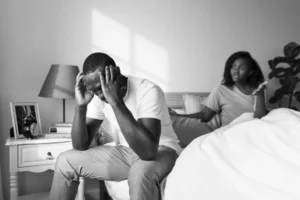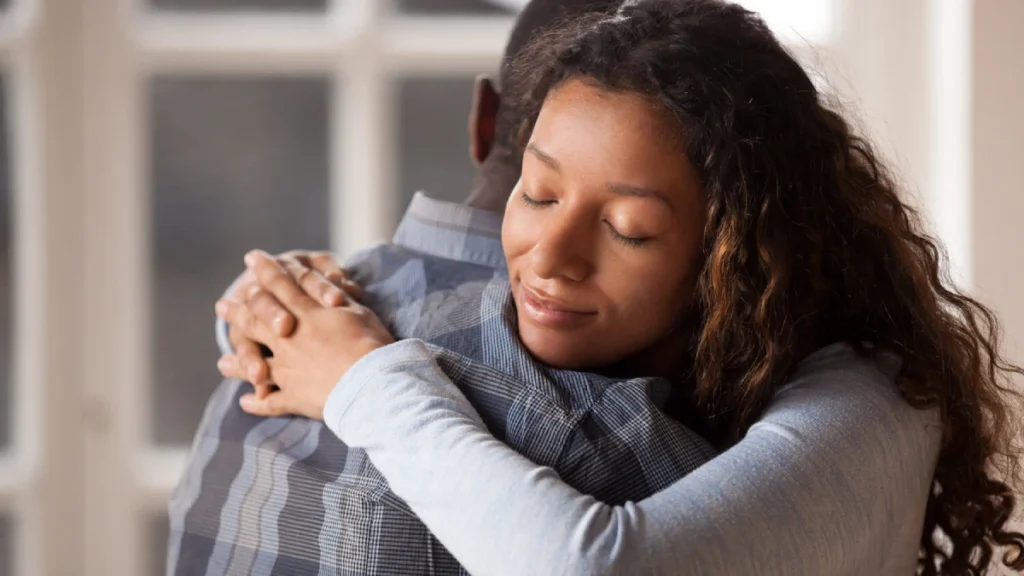Do you find yourself constantly worried about your relationships? Maybe you often feel like you’re too clingy, or perhaps you’re always scared that people you care about will leave you. If these thoughts sound familiar, you might be dealing with an anxious attachment style, which can make you feel insecure and stressed in your relationships.
In this blog, we’re going to explore how therapy can be a game-changer for those struggling with an anxious attachment style. We’ll dive into the signs that you might have this attachment style and discuss how specific therapeutic techniques can help you build stronger, healthier relationships. You’ll learn about the types of therapy that are particularly effective and get practical tips on finding the right therapist to work with.
So, whether you’re just starting to question your attachment style or you’re looking for ways to manage it, this blog will give you the tools and insights you need.
Contents
Understanding Anxious Attachment Style
 An anxious attachment style means feeling insecure in your relationships. It often starts in early childhood when the care from parents or guardians was unpredictable—sometimes they are warm and responsive, and other times they are distant or not available. This inconsistency can lead to a strong fear of being abandoned and a constant worry that loved ones might leave.
An anxious attachment style means feeling insecure in your relationships. It often starts in early childhood when the care from parents or guardians was unpredictable—sometimes they are warm and responsive, and other times they are distant or not available. This inconsistency can lead to a strong fear of being abandoned and a constant worry that loved ones might leave.
People with an anxious attachment style may:
- Need a lot of reassurance and closeness from their partners, fearing that any distance means their partner is losing interest.
- Stay very alert to any small changes in the relationship, worried that these might mean something is wrong.
- Read too much into simple comments or gestures, thinking they might be signs of rejection.
- Struggle with mixed feelings about conflict: they desire closeness but might act in ways that push people away, making their fears of losing someone come true.
Recognizing these behaviors can help you or someone you know understand why relationships feel so challenging and be the first step towards improving them.
Signs You May Have an Anxious Attachment Style
If you’re wondering whether you might have an anxious attachment style, here are some key signs and symptoms to look for.
- You find yourself constantly worried about your relationships, fearing that something might go wrong or that you’ll be left alone.
- Your biggest fear is being abandoned or left by someone you care about.
- You might struggle to fully trust your partner.
- You may doubt their intentions or fear that they’re not as committed as you are.
- You often seek reassurance from your partner about their love and commitment.
- Might be highly sensitive to any changes in your partner’s mood or behavior, interpreting even small things as signs of a problem in the relationship.
- You Might have feelings of jealousy or possessiveness
- You might react very emotionally to situations in relationships, which can feel overwhelming or exhausting to both you and your partner.
- Often, individuals with an anxious attachment style struggle with self-esteem, which fuels their relationship insecurities.
Can You Change from Anxious Attachment to Secure Attachment?
 Yes, it is possible to move from an anxious attachment style to a more secure attachment style. Here are some practical tips that can help you on this journey toward a more secure way of connecting with others:
Yes, it is possible to move from an anxious attachment style to a more secure attachment style. Here are some practical tips that can help you on this journey toward a more secure way of connecting with others:
- Self-Education
Learn about different attachment styles, including secure attachment. Understanding the characteristics of secure attachment can help you identify behaviors to emulate. - Reflect on Your Relationships
Identify patterns that signify anxious attachment, such as clinging behavior or sensitivity to your partner’s moods and actions. - Practice Effective Communication
Work on expressing your feelings and needs clearly and assertively, not aggressively or passively. Effective communication can reduce misunderstandings and build trust. - Develop Self-Compassion
Often, anxiety in relationships stems from a lack of self-worth. Practicing self-compassion can help you feel more secure within yourself, which translates into your relationships. - Build Trust Consciously
Focus on building trust little by little. Trust is foundational for secure attachment, and by choosing to trust others, you can begin to change your expectations of your relationships. - Seek Support
This can include therapy, but also turning to trusted friends or family who understand your desire to change your attachment style. They can offer support and feedback as you try new behaviors. - Establish Boundaries
Learning to set healthy boundaries can significantly contribute to a sense of security in relationships. It helps you understand where you end and the other person begins. - Mindfulness Practices
Engage in mindfulness exercises that help you stay present in the moment rather than worrying about the future. This can decrease anxiety and help you respond more calmly in relationships.
By consistently practicing these tips, you can gradually start to experience changes in how you relate to others, moving towards a more secure attachment style over time.
The Role of Therapy For an Anxious Attachment Style

Therapy plays a crucial role in addressing and managing an anxious attachment style. It provides a structured and supportive environment where individuals can delve into the roots of their attachment issues and work towards developing healthier relational patterns.
Here’s how specific therapeutic approaches can be particularly beneficial:
Cognitive-Behavioral Therapy (CBT)
CBT is highly effective for treating anxious attachment because it focuses on the patterns of thinking that underlie our emotions and behaviors. For those with an anxious attachment style, CBT can help identify and challenge the negative thought patterns—like fears of abandonment or beliefs that one is unworthy of love—that often drive their behaviors in relationships. Through CBT, individuals can learn to replace these unhelpful thoughts with more positive and realistic ones, which can lead to more secure behaviors and feelings in relationships.
Dialectical Behavior Therapy
Dialectical behavior therapy (DBT) is a form of CBT that focuses on understanding and managing emotions. This approach can help treat anxious attachment styles, as it helps individuals to better regulate their emotions and build healthier relationships with others.
In DBT, clients learn skills such as distress tolerance, emotion regulation, and interpersonal effectiveness. These skills can help an individual to better manage their anxiety and insecurity in relationships.
Psychodynamic Therapy
For those with anxious attachment styles, psychodynamic therapy can be a powerful tool for understanding the underlying dynamics at play in their relationships. This type of therapy emphasizes the relationship between conscious and unconscious experiences and how these can affect relationships.
Psychodynamic therapy focuses on exploring childhood experiences, family dynamics, and other past events that may be influencing current behaviors and fears. This type of therapy helps individuals to build a better understanding of themselves and their attachment styles.
Attachment Theory-Based Therapy
This type of therapy directly addresses the issues at the core of anxious attachment styles. It helps individuals understand how their early experiences with caregivers have shaped their expectations of relationships and their emotional responses to others. Therapy provides a safe space to explore these early attachments and work through unresolved feelings, which may be contributing to current anxieties about relationships.
By engaging in therapy, individuals with an anxious attachment style can expect to develop a greater understanding of themselves and their relational dynamics. This understanding is key to forming more stable and fulfilling connections with others.
Techniques Used in Therapy for Anxious Attachment
 Here are some specific therapeutic techniques that are effective:
Here are some specific therapeutic techniques that are effective:
- Mindfulness Practices such as focused breathing, meditation, and body scans.
- Emotional regulation strategies
- Cognitive reframing
- Behavioral experiments
- Visualization techniques
- Communication skills training
- Self-esteem exercises
These techniques, often integrated into therapeutic models like cognitive-behavioral therapy (CBT) and attachment-based therapy, can significantly help individuals with anxious attachment styles develop healthier ways of connecting with others.
Need Help? Visit Us Today!
Dealing with anxious attachment can feel overwhelming, stressful, and sometimes lonely. But remember, you don’t have to navigate these feelings alone. If you’re seeking support and are ready to explore ways to foster healthier relationships, MantraCare is here to help.
Our experienced therapists specialize in online anxiety counseling and are equipped to help you address your anxious attachment style through a supportive and structured approach. For more information or to book a trial anxiety therapy session, please contact MantraCare.


